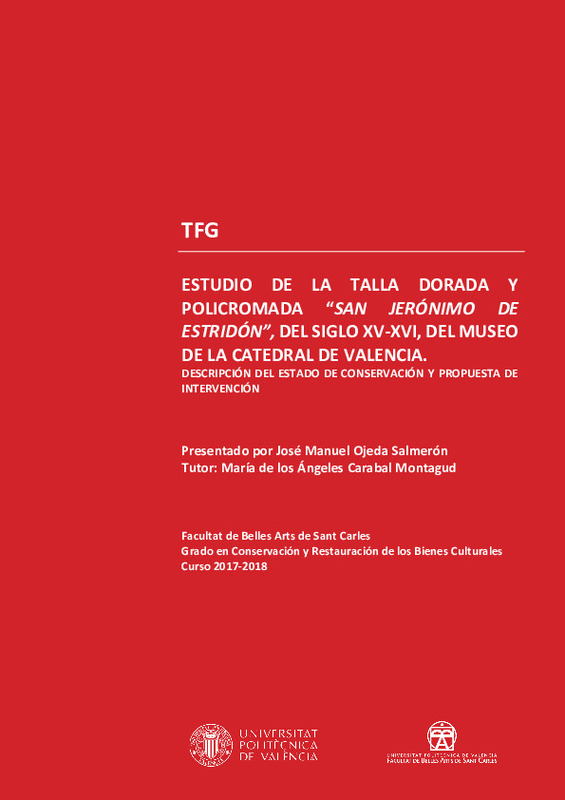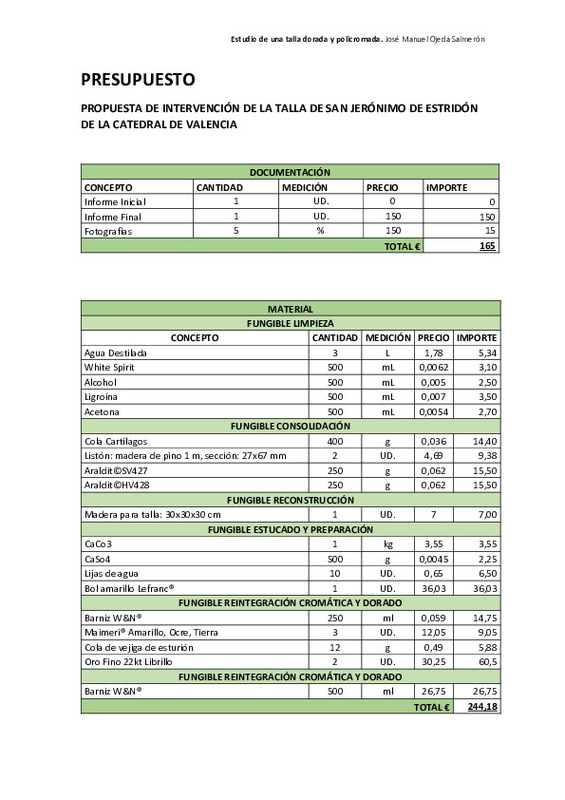JavaScript is disabled for your browser. Some features of this site may not work without it.
Buscar en RiuNet
Listar
Mi cuenta
Estadísticas
Ayuda RiuNet
Admin. UPV
Estudio de la talla dorada y policromada San Jerónimo de Estridón , del siglo XV, del Museo de la Catedral de Valencia. Descripción del estado de conservación y propuesta de intervención
Mostrar el registro completo del ítem
Ojeda Salmerón, JM. (2018). Estudio de la talla dorada y policromada San Jerónimo de Estridón , del siglo XV, del Museo de la Catedral de Valencia. Descripción del estado de conservación y propuesta de intervención. http://hdl.handle.net/10251/107774
Por favor, use este identificador para citar o enlazar este ítem: http://hdl.handle.net/10251/107774
Ficheros en el ítem
Metadatos del ítem
| Título: | Estudio de la talla dorada y policromada San Jerónimo de Estridón , del siglo XV, del Museo de la Catedral de Valencia. Descripción del estado de conservación y propuesta de intervención | |||
| Autor: | Ojeda Salmerón, José Manuel | |||
| Director(es): | ||||
| Entidad UPV: |
|
|||
| Fecha acto/lectura: |
|
|||
| Resumen: |
El presente estudio está desarrollado en torno a una talla de madera de finales del siglo XV, principio del XVI, tradicionalmente atribuida a Alejo de Vahía, pero recientes investigaciones apuntan a que el autor podría ser ...[+]
This study is developed around a wood carving of the late 15th century, beginning of the 16th, traditionally attributed to Alejo de Vahía, but recent research suggests that the author could be Carles Gonçalbez. It is ...[+]
|
|||
| Palabras clave: |
|
|||
| Derechos de uso: | Reconocimiento (by) | |||
| Editorial: |
|
|||
| Titulación: |
|
|||
| Tipo: |
|
recommendations
Este ítem aparece en la(s) siguiente(s) colección(ones)
-
BBAA - Trabajos académicos [5086]
Facultad de Bellas Artes








